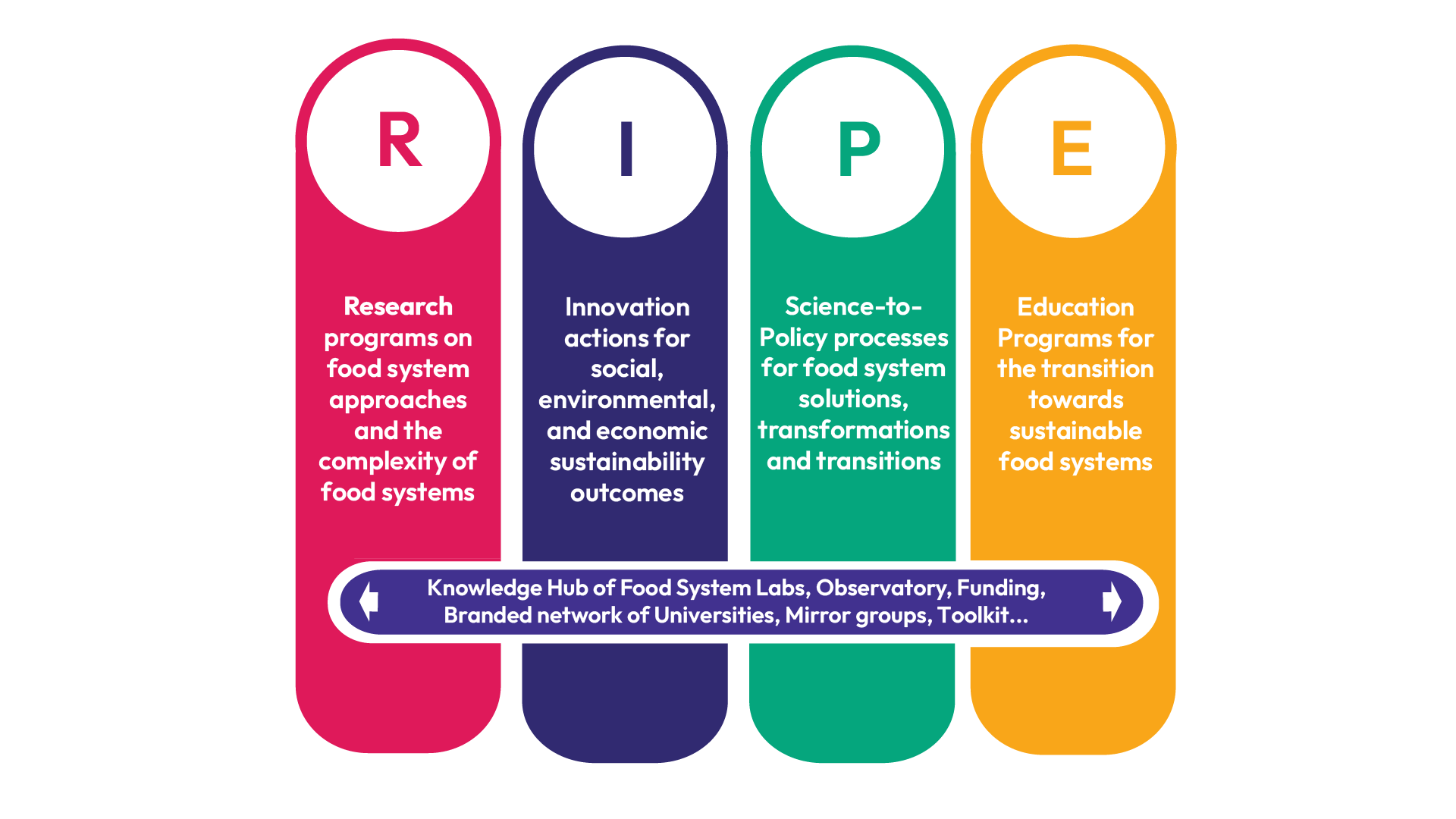Tool 2 – RIPE Concept
How can we break down silos and create stronger partnerships for sustainable food systems?
The RIPE Concept connects Research & Innovation (R&I), Policy (P), and Education (E) to foster sustainable food systems partnerships. Its methodology evolves from siloed themes to integrated approaches aligning R&I, P, and E priorities. This concept identifies key themes and synergies from strategic agendas, offering practical guidence for case studies, funding calls, and collaboration networks.

Who is this tool for?
The tool targets any food systems actor that is willing to join partnerships (and large initiatives) on sustainable food systems, both in R&I, as well as in Education and Policymaking. For instance,
- Public & private,
- Academic,
- Philanthropic, or
- Non-governmental sectors.
What are the benefits?
✅Break down silos – Integrate RIPE to create a more cohesive approach to food systems transformation.
✅Enhance your collaborations – Align priorities across sectors.
✅Guide your strategic planning – Identify synergies, gaps, and critical issues in food systems.
✅A practical tool – Clear methodology & guideline for case studies, collaboration networks, and effective decision-making.
Take these steps to follow the RIPE Concept:
1.Extract the key R&I themes from the Strategic Research and Innovation Agenda (SRIA) of the Partnership Sustainable Food Systems (see SCAR, 2023)
2.List the major science-to-Policy topics from FOODPathS’ document “Contributions to SRIA 2.0 and Science-Policy Interface“, as well as from other relevant resources (i.e. the Ghent-Group discussions).
3.Collect the main Education priorities from FOODPathS’ document “Report with assessed skills and knowledge gaps” and from other relevant initiatives, such as the Agrifood Pact4Skills.
4.Cross-check R&I themes, P topics, and E priorities to seek synergies, gaps and critical issues. Define potential strategies for these synergies, solutions for gaps, and alternative approaches for critical issues, taking into account the concept that connects RIPE with sustainably evolving food systems partnerships (see FOODPathS’ document “The RIPE concept“)
5.Translate the strategies, solutions and approaches into practical guidelines for:
- executing and demonstrating case studies via the Knowledge Hub of Food Systems Labs (Report on Mapping Results & European Central Hub of Food System Labs)
- utilizing effectively the food system observatory for sustainability aims (Food Systems Approach and Observatories & Functioning Food System Approaches & Observatory)
- aligning funding calls of Partnership(s) (Aligned network and strategies for cofunding)
- structuring a branded network of universities (Towards a branded network of exemplary university-driven local food ecosystems)